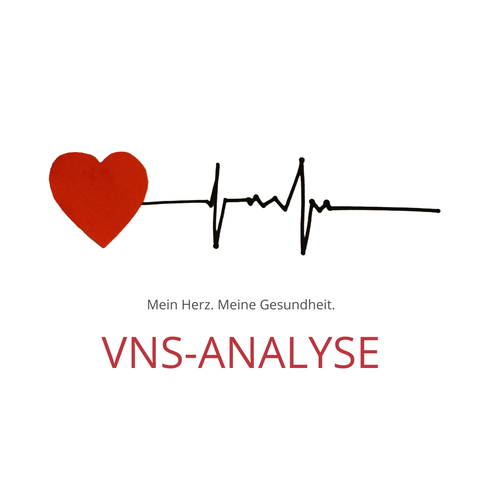Services
ANS analysis
VNS Analysis
A Window into Autonomic Resilience Our work in the field of VNS (Vagal Nerve Stimulation) diagnostics is centered on understanding and optimizing the autonomic nervous system—the body’s built-in control center for stress response, recovery, and overall vitality.
Proactive Stress Detection VNS diagnostics serve as an early warning system for chronic stress and physical overload. By monitoring heart rate variability (HRV) and other markers, we can detect disruptions in autonomic function before symptoms escalate—allowing timely interventions that support both mental and physical resilience.
Boosting Performance & Cognitive Clarity The vagus nerve plays a pivotal role in emotional regulation, focus, and decision-making. By assessing its function, we gain insights into how well the body manages pressure and sustains high-level performance. This enables us to develop personalized strategies that sharpen clarity, speed reaction times, and enhance overall productivity.
Strategic Health Management & Longevity Support A balanced autonomic nervous system supports immune regulation, metabolic efficiency, and restorative processes. VNS diagnostics provide a roadmap for long-term health planning—empowering individuals to take control of their well-being through tailored lifestyle adjustments and preventive care.
Analysis of the autonomic nervous system – VNS
Understanding the Autonomic Nervous System (ANS) The autonomic nervous system is a sophisticated regulatory network made up of two key components: the sympathetic nervous system, which activates and energizes the body, and the parasympathetic nervous system, which governs relaxation and recovery. These two branches work in dynamic balance to manage vital bodily functions—together forming the system we refer to as the ANS.
The term autonomic reflects its core characteristic: it operates independently of conscious control. In other words, you don’t need to think about making your heart beat, adjusting your breathing rate, or regulating organ function—the ANS handles these processes automatically. It governs essential physiological activities such as cardiovascular rhythm, respiration, temperature regulation through blood vessel constriction, sweating, and the functionality of internal organs.
In contrast, the somatic nervous system—also known as the voluntary or “animal” nervous system—allows us to consciously control muscle movements and coordinate physical actions. There is, however, an area of overlap. A prime example is breathing: while it’s primarily governed by the autonomic system, we also have the ability to voluntarily modify it, such as when holding our breath or practicing controlled breathing techniques.
Both the autonomic and somatic systems draw upon the central nervous system (brain and spinal cord) and the peripheral nervous system to perform their roles. Together, they maintain the delicate balance between involuntary processes and intentional actions that keeps our bodies functioning smoothly.
The autonomic nervous system (ANS) - the supreme control center , Without the regulation of the ANS, organs and organ systems could not function. This means that an organic disorder is due to a previous disruption in the control and regulation by the ANS.
Sympathetic and parasympathetic nervous systems
The Evolutionary Dance of the Autonomic Nervous System The interplay between the sympathetic and parasympathetic nervous systems has deep evolutionary roots. In moments of danger—such as facing a threat or preparing to flee—the sympathetic nervous system activates a surge of responses: blood pressure rises, heart rate increases, and the body mobilizes energy to perform at peak capacity. This “fight or flight” response boosts efficiency, ensuring survival.
In contrast, the parasympathetic nervous system functions as the body’s restoration system. It slows the heart rate, lowers blood pressure, and facilitates relaxation, digestion, and recovery. When both systems are in balance, the body maintains a healthy rhythm between action and rest.
However, prolonged stress or chronic illness can upset this equilibrium. The sympathetic system may dominate constantly, keeping the body in a state of ongoing alert. This sustained activation elevates blood pressure and blood sugar levels, while the parasympathetic system retreats—diminishing digestive function and weakening immune defense. Over time, this imbalance can contribute to conditions like persistent hypertension, burnout syndrome, and chronic inflammation (e.g., gastritis).
Why Autonomic Nervous System Analysis Matters By analyzing the functioning of the autonomic nervous system, subtle dysfunctions and underlying causes of disease can be uncovered—often before conventional lab markers reveal abnormalities. These insights allow for early intervention, targeted treatment, and better long-term health outcomes.
What Is VNS Analysis? VNS (Vagal Nerve Stimulation) analysis is a method used to evaluate the autonomic nervous system (ANS) by measuring heart rate variability (HRV). HRV reflects the subtle time differences between individual heartbeats. Generally, greater variability indicates a healthier, more adaptive autonomic response.
How Does It Work? During a VNS analysis, the intervals between heartbeats are recorded using a chest strap sensor. To ensure reliable results, the patient should be given at least ten minutes to relax prior to the test. The recording is performed while seated, and it’s important to minimize any movement or speech during the procedure.
The session ends once 520 heartbeats are captured. Since heart rate influences how quickly this threshold is reached, the total duration typically falls between five to ten minutes.
Important Considerations VNS analysis is non-invasive, painless, and free from side effects. However, it may not yield accurate results for individuals with atrial fibrillation, absolute arrhythmia, or those who rely on pacemakers, as these conditions interfere with heart rate variability measurements.
An Ancient Truth Rediscovered The significance of heart rate variability isn’t a modern discovery. A Chinese physician in the third century AD reportedly stated: “If the heartbeat is as regular as the tapping of a woodpecker or the patter of rain on a roof, the patient will die within four days.” This ancient wisdom highlights the importance of subtle irregularities in heartbeat timing as a sign of vitality—an insight that continues to shape modern diagnostics.

The heart as a measurable mirror of the autonomic nervous system and alarm generator
Heart Rate Variability: A Window into Autonomic Balance The heart’s rhythm is directly influenced by the sympathetic and parasympathetic nervous systems—two branches of the autonomic nervous system (ANS) that govern periods of stress and relaxation. By observing the heart’s activity, particularly the heartbeat patterns, we can gain valuable insights into the functional state of the ANS.
At the core of this observation is heart rate variability (HRV)—a measure of the time intervals between successive heartbeats, typically calculated in milliseconds. These subtle fluctuations reflect how dynamically the nervous system responds to internal and external demands. HRV is also referred to as heart rhythm variability or simply by its abbreviation, HRV.
In ANS analysis, HRV and its moment-to-moment changes are carefully measured. A high degree of variability indicates a well-balanced interaction between the sympathetic “accelerator” and parasympathetic “brake” systems. This suggests the autonomic nervous system is resilient—able to activate effectively during stress, and just as importantly, switch into recovery mode when needed.

